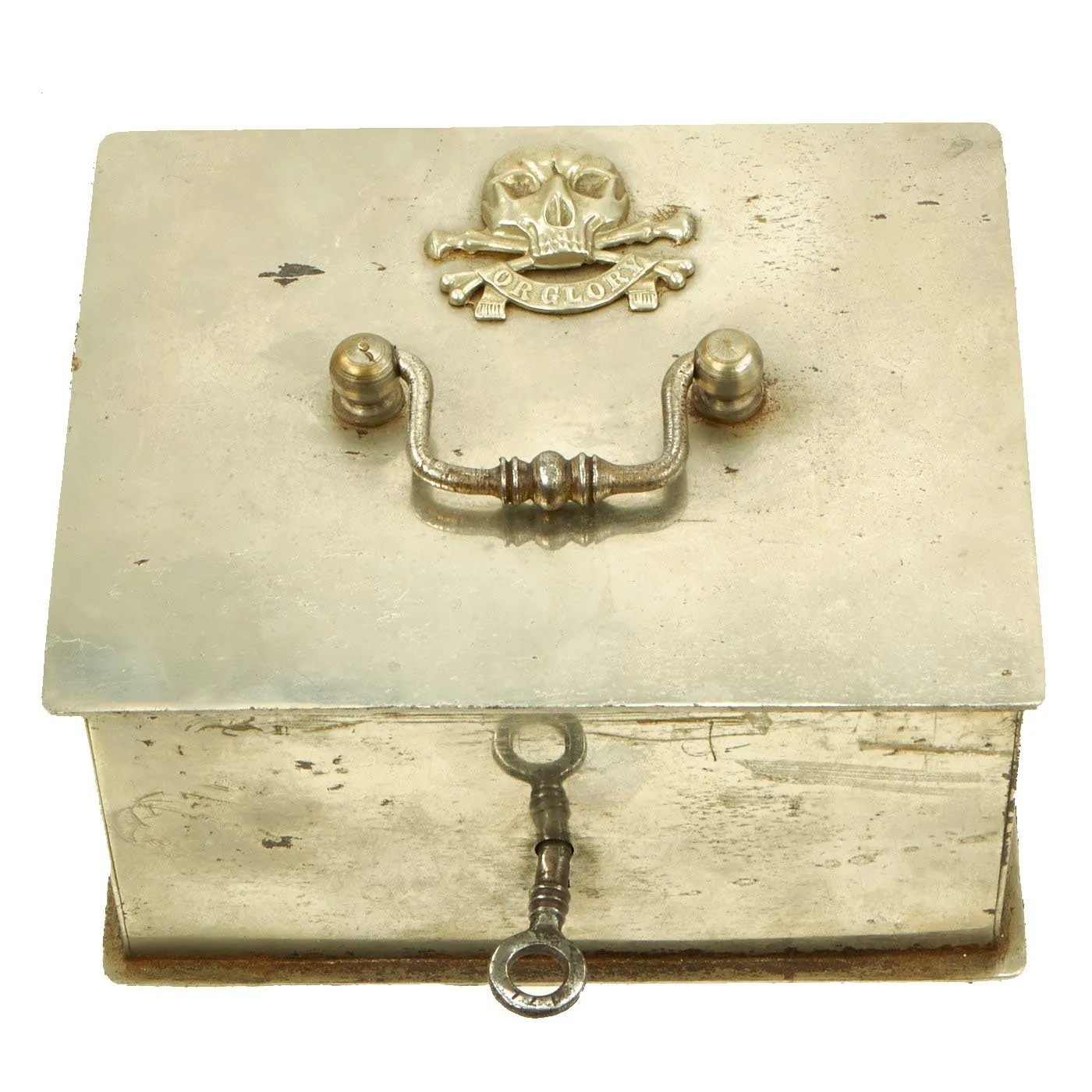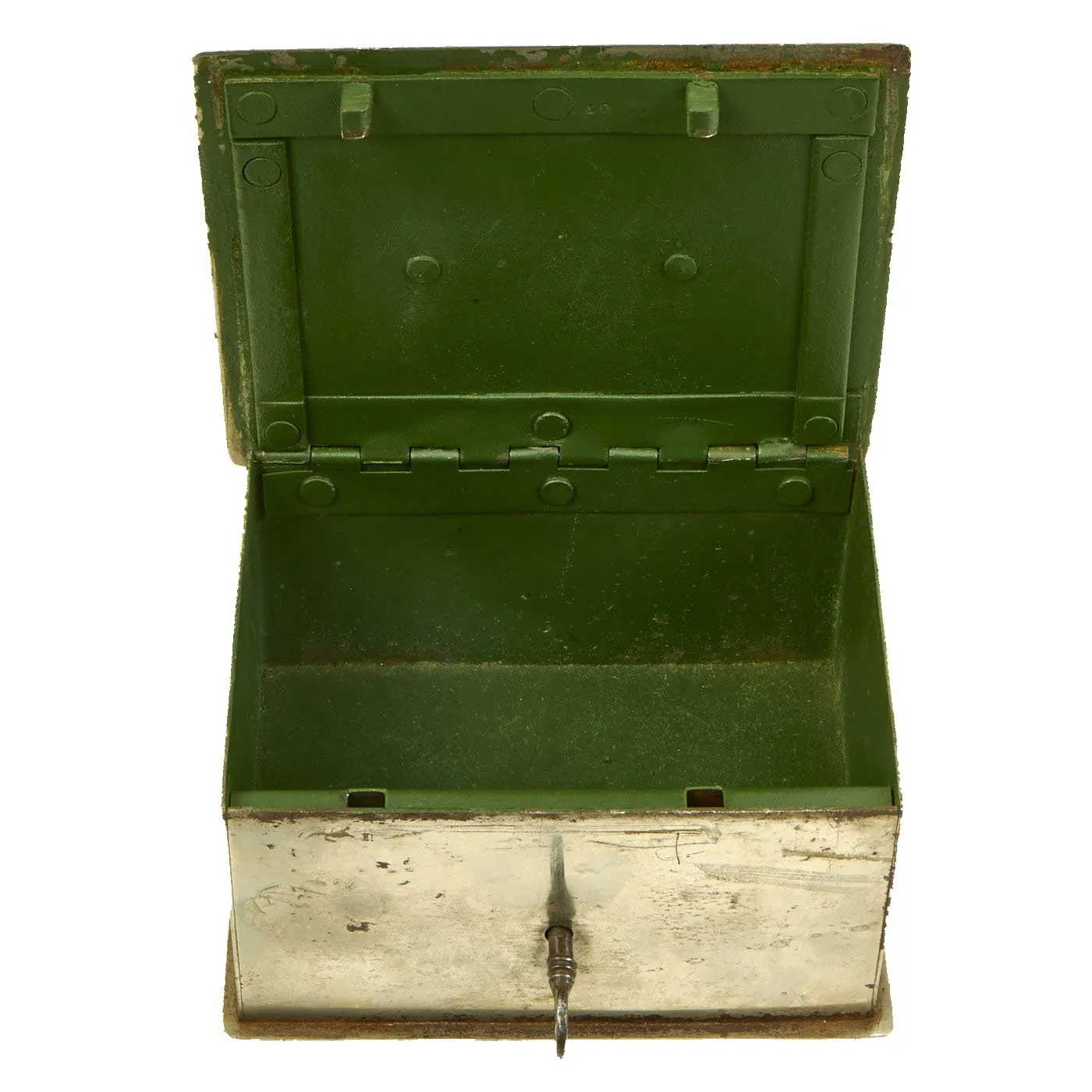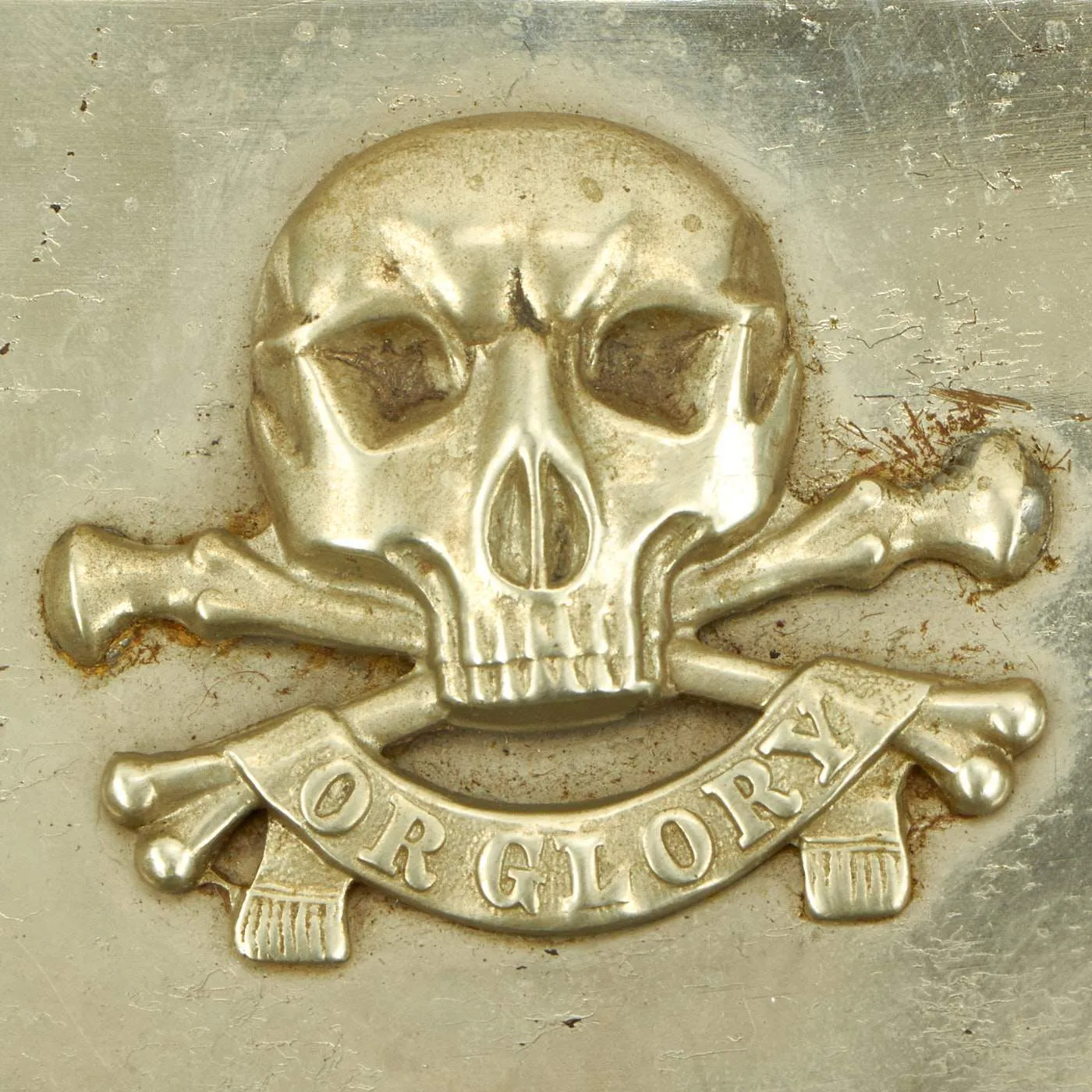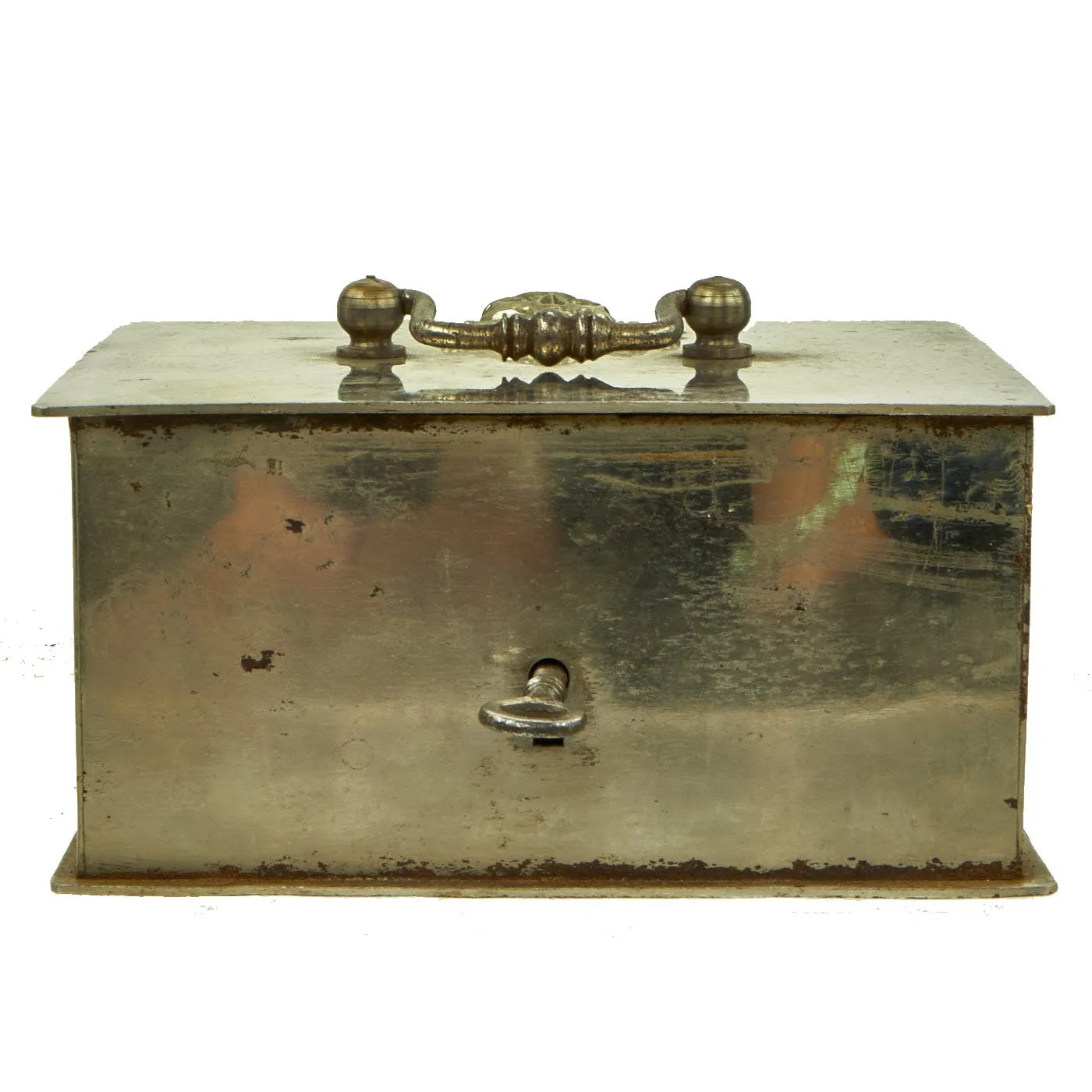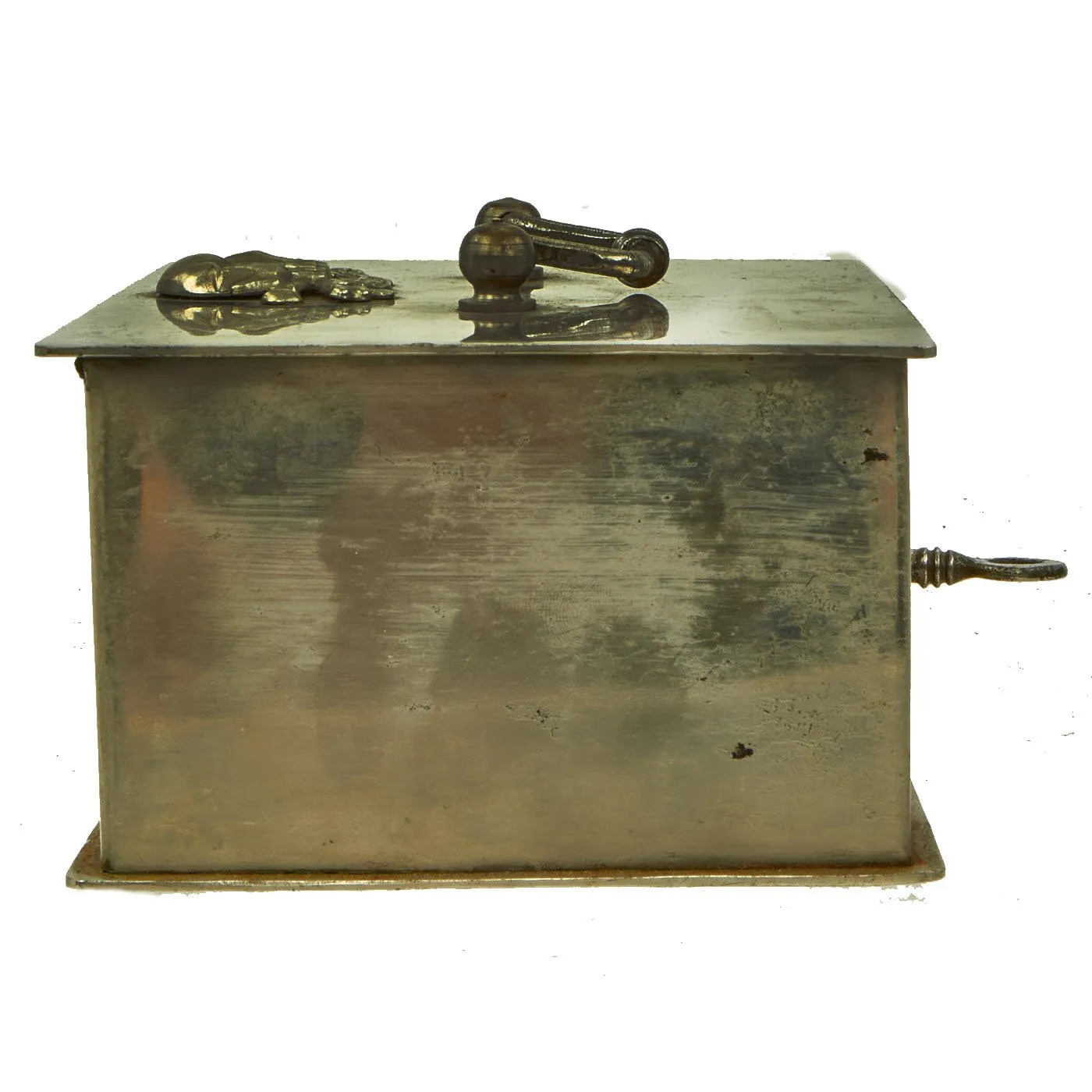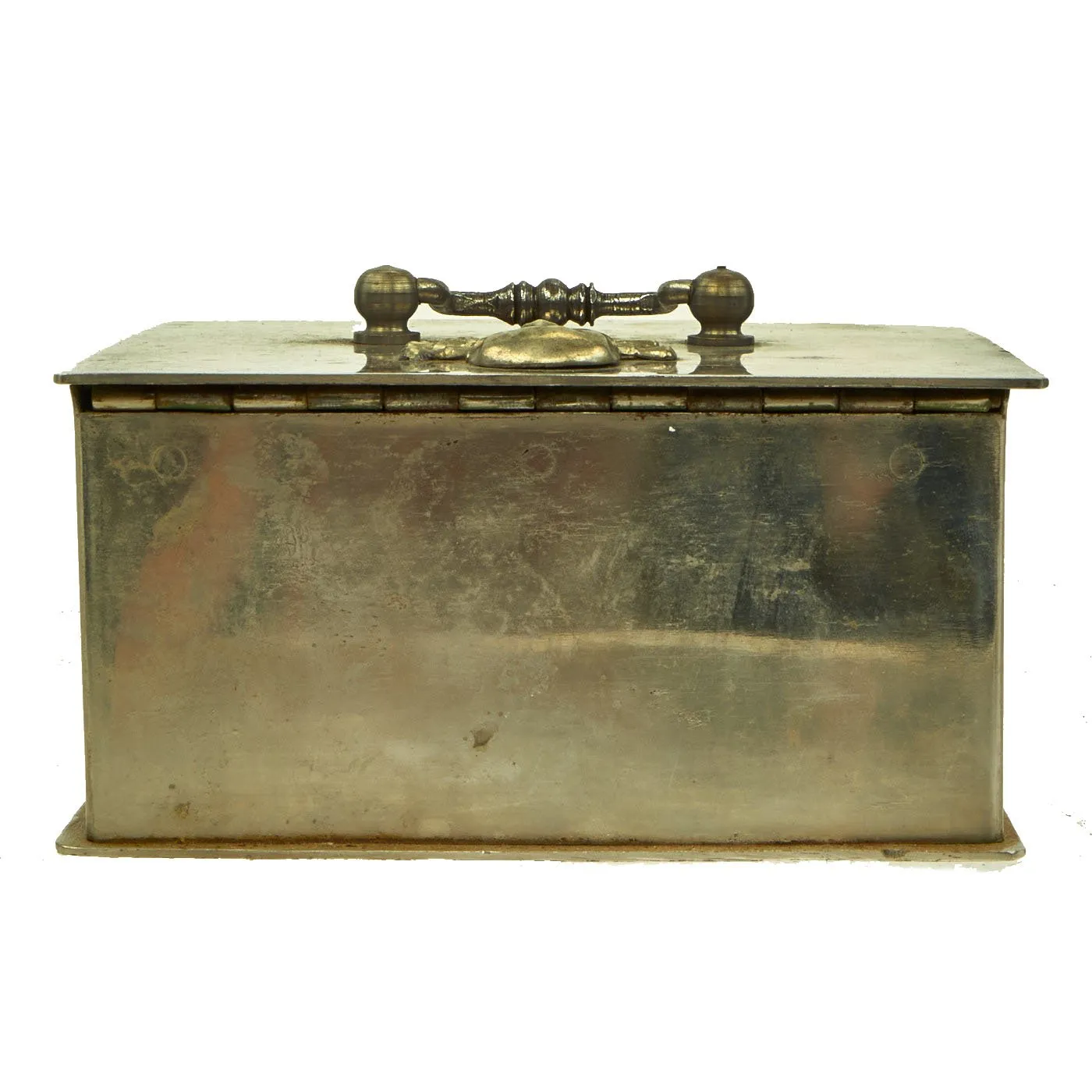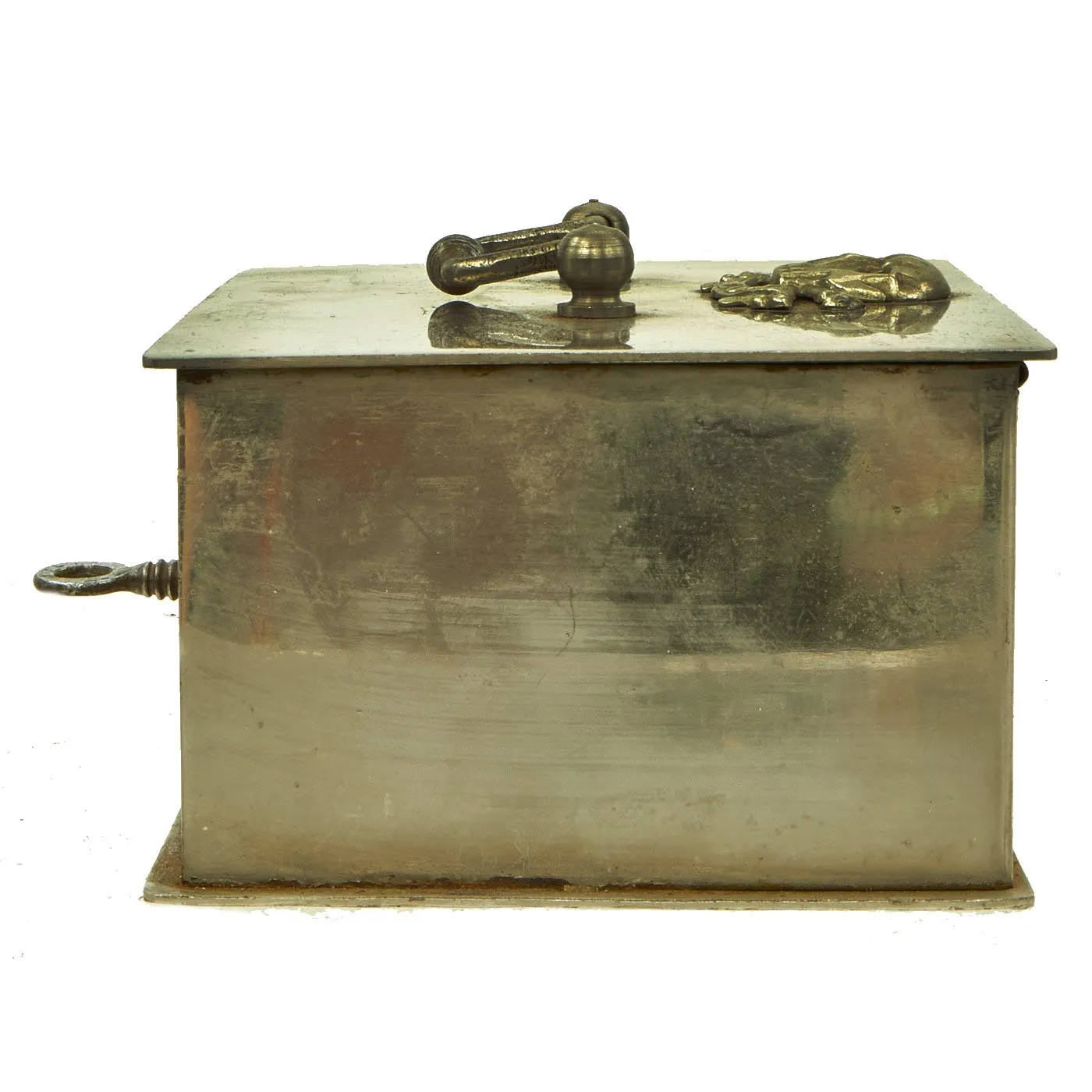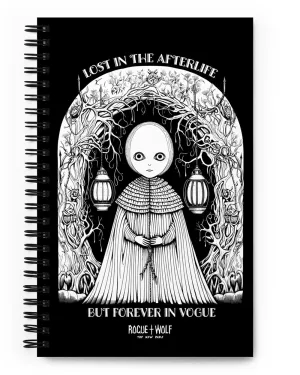Original Item: One of a Kind. Here we have a very fine Victorian Era officer's mess cash box with key, marked to the 17th Lancers Regiment. The box is of all steel construction, with old nickel plating, still very well retained. It has a handle on the top lid, and above this is a large "Skull and Crossed Bones over Glory" device, the regimental insignia of the 17th Lancers, whose motto was "Death or Glory".
This most appealing cash box measures 6 1/2" wide x 5" deep x 3 1/4" tall. Unfortunately now empty but in truth mostly ever contained officer's I.O.U.'s for their mess bills.
Dating to the second half of the 1800's, the lock is still operational, though the key must be kept vertically oriented for the lid to pull open. Perfect for any display or desk!
The 17th Lancers (Duke of Cambridge's Own) was a cavalry regiment of the British Army, raised in 1759 and notable for its participation in the Charge of the Light Brigade during the Crimean War. The regiment was amalgamated with the 21st Lancers to form the 17th/21st Lancers in 1922.
In December 1857 the regiment arrived in India to reinforce the effort to suppress the Indian rebellion against British rule. By the time the regiment was prepared for service, the rebellion was effectively over, although it did take part in the pursuit of Tatya Tope, the rebel leader. During the course of the pursuit, Lieutenant Evelyn Wood earned the Victoria Cross for gallantry. The regiment returned to England in 1865. The regiment became the 17th Regiment of Lancers in August 1861. When, in 1876, it gained Prince George, Duke of Cambridge as its colonel-in-chief, the regiment adopted the title of the 17th (The Duke of Cambridge's Own) Lancers.
The regiment was sent to Natal Colony for service in the Anglo-Zulu War and fought at the Battle of Ulundi under Sir Drury Curzon Drury-Lowe in July 1879. The regiment was deployed inside a large British infantry square during the attack by the Zulu Army, which had surrounded the British. When the attack appeared to be wavering, the regiment was ordered to advance: their charge routed the warriors with heavy loss and proved to be decisive. The regiment returned to India the same year, remaining there until about 1890 when they returned to England.
Second Boer War
In February 1900 a contingent from the regiment, comprising Lieutenant-Colonel E. F. Herbert and 500 troops, was deployed to South Africa for service in the Second Boer War, and arrived to Cape Town on the SS Victorian early the next month. The contingent missed the large pitched battles, but still saw action during the war. In 1900, Sergeant Brian Lawrence won the regiment's fifth and final Victoria Cross at Essenbosch Farm. The contingent's most significant action was at the Battle of Elands River (Modderfontein) in September 1901. C Squadron was attacked by a unit of Boers under the command of Jan Smuts; the Lancers mistakenly assumed the unit was friendly because of their attire. The Boers immediately opened fire, attacking from both the front and the rear. The Lancers suffered further casualties at a closed gate that slowed them down. Only Captain Sandeman, the squadron commander, and Lieutenant Lord Vivian survived. The regiment suffered 29 killed and 41 wounded before surrendering, while Boer losses were just one killed and six wounded.
They stayed in South Africa throughout the war, which ended June 1902 with the Peace of Vereeniging. Four months later, 540 officers and men left Cape Town on the SS German in late September 1902, and arrived at Southampton in late October, when they were posted to Edinburgh.




